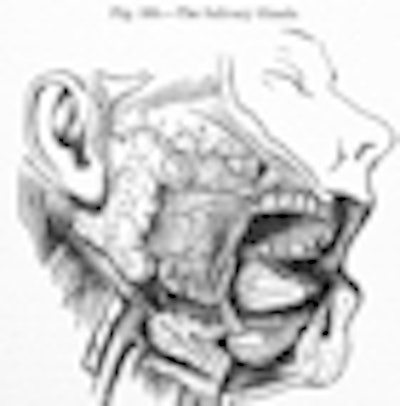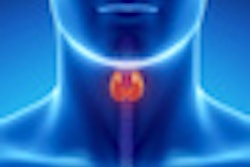
Surgery alone is the least expensive treatment for oropharyngeal squamous cell carcinoma (OP SCCA), and chemoradiation therapy is the most expensive treatment, according to a new study by Mayo Clinic researchers (Otolaryngology -- Head and Neck Surgery, June 2012, Vol. 146:6, pp. 946-951).
With annual healthcare costs in the U.S. now hitting the $2 trillion mark and more patients being diagnosed with OP SCCA, the cost of treating patients with this type of cancer needs to be reviewed and considered, the researchers said.
"This figure is constantly rising, and when we are faced with seemingly equivalent treatment choices, it is not only rational but imperative for healthcare survival to assess the relative costs of these treatments and to act in a cost-effective manner," they wrote.
The National Comprehensive Cancer Network's guidelines for OP SCCA treatment recommend definitive radiation therapy (RT) or surgical excision of the primary tumor with ipsilateral or bilateral neck dissection (S ± adjuvant RT) or chemoradiation therapy (CRT) for early and advanced stage disease.
"In the absence of a consistent proven survival advantage, many argue that patients are best served by using quality-of-life and functional outcomes data to determine the best treatment" (Laryngoscope, December 2010, Vol. 120:12, pp. 2434-2445), the study authors wrote.
3-month window
The current study used oropharyngeal cancer databases from two Mayo Clinic sites (Rochester, MN, and Scottsdale, AZ) containing patients who had complete treatment for OP SCCA from January 2009 to July 2010. Patients were divided into treatment groups of transoral surgery (transoral laser microsurgery [TOS] or transoral robotic surgery [TORS]) alone, TOS + RT, TOS + CRT, and primary CRT. The groups were also split into government payors and private payors. All groups had at least five patients. The study did not include patients treated with radiation alone because this is not a commonly recommended treatment at the Mayo Clinics for low T-stage oropharyngeal carcinomas, the researchers noted. Patients were offered primary operative therapy and nonoperative therapy, and the treatment decision was based on a combination of patient and physician preference.
Costs were analyzed from an institutional perspective looking at reimbursement, with cost defined as the reimbursement for all charges surrounding the three-month episode of treatment. Costs reflect money paid by the patient and third-party payor for treatment, and included outpatient consultations, imaging studies, laboratory fees, inpatient procedures, hospitalization, outpatient procedures, emergency room care, and medications.
Costs increased as the number of treatment modalities increased, and complications increased the cost of treatment in each group, the researchers found. In addition, costs were universally lower for government payors compared with private payors, they noted.
Surgery alone had the lowest cost of treatment for both private payors and government payors ($37,435 versus $15,664), which cost one-fifth as much as primary chemoradiation therapy in private payor patients.
"This is in direct contradiction to the results of cost for treatment of OPSCCA performed in Europe," the researchers noted (Laryngoscope, January 2007, Vol. 117:1, pp. 101-105).
The highest cost surrounding surgical therapy was the cost of the procedure and hospitalization, the study authors found. The average postoperative stay for patients undergoing transoral oropharyngeal cancer at the Mayo Clinics is 2.4 days. The surgery-alone group spent the fewest days in the hospital for treatment-related complications (0), whereas the chemoradiotherapy group spent the most days in the hospital (14) due to complications.
Some surprises
The researchers were surprised that CRT alone cost more than S + CRT.
"This may be secondary to the percutaneous gastrostomy tube that every patient being treated with CRT alone received, and the associated gastrointestinal physician, nutrition, and anesthesia consults," they wrote. The gastrostomy tube placement represented the third-highest cost in the CRT group and was placed in every patient undergoing primary chemoradiation therapy. Also, the hospital admissions for hydration, treatment of mucositis, and treatment of medical issues were higher in the CRT group, the authors pointed out.
The surgery-alone group had lower stage tumors than the other groups, and this could influence the cost of treatment, the researchers said. Still, the surgery-alone group did contain more advanced overall stage (stage III/IV) tumors than early stage (stage I/II) tumors, and the stage distribution in the other groups was not statistically dissimilar.
The hospitalization rate for complications and the overall costs seemed to be more influenced by treatment modalities than patient stage, the researchers noted.
"In a comparison of costs of these treatments from an institutional perspective, we found that the least expensive treatment was surgery alone," they wrote, and adding more treatments increased cost. Chemoradiation therapy was 5.29 times more expensive than surgery alone for nongovernment payors and 3.66 times more expensive for government payors, they noted.
Despite these findings, treatment of OP SCCA should be individualized to the specific characteristics of the tumor, desires and expectations of the patient, and skill of the provider, the study authors emphasized.



















